How to Buy Train Tickets in China as a Foreigner in 2025
Contents
- Why Choose Train Travel in China?
- Why Trains Beat Planes
- Understanding Train Types and Seat Classes
- High-Speed Trains (G/D/C)
- Tips for High-Speed Trains:
- Overnight Trains (Z/T/K)
- Seat Classes
- Essential Preparations for Buying Train Tickets
- How to Buy Train Tickets in China Online: Step-by-Step Guide
- Option 1: Buying Tickets on Trip.com
- Option 2: Buying Tickets on the 12306 App/Mini Program
- Buying Tickets at the Train Station
- Ticket Windows
- Self-Service Machines (TVMs)
- When to Book Train Tickets in China
- Booking Windows:
- Peak Seasons:
- Boarding Process for China’s Trains
Show more
Traveling by train in China is one of the most efficient and scenic ways to explore the country’s vast landscapes. With the world’s largest high-speed rail network, China’s trains are fast, reliable, and affordable. However, for foreigners who don’t speak Chinese, navigating the ticket-buying process can feel a bit daunting due to language barriers, real-name policies, and technical hurdles.
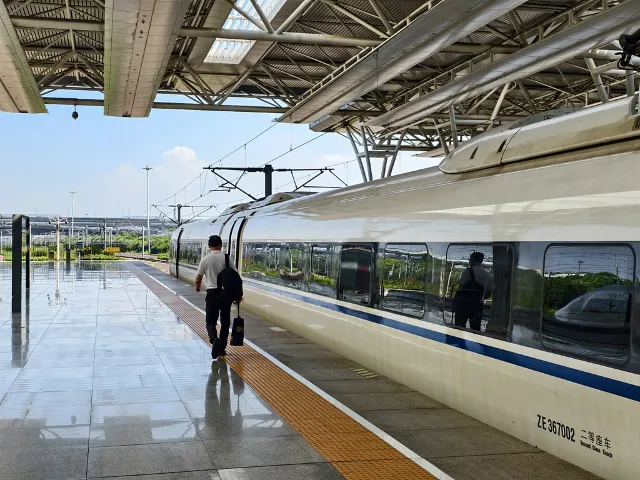
This guide explains how to buy train tickets in China using user-friendly platforms like Trip.com and the official 12306 app, ensuring a seamless travel experience. Whether you’re planning a high-speed journey or an overnight adventure, we’ve got you covered with up-to-date, practical advice optimized for your needs.
China’s high-speed rail (HSR) network, spanning over 45,000 kilometers in 2025, is the world’s largest and connects major cities, and beyond, with trains reaching speeds of up to 350 km/h. Whether you’re a tourist exploring cultural hubs or a business traveler hopping between economic centers, China’s trains offer unmatched reliability, comfort, and value.
No Delays, No Hassle: Unlike flights, which often face delays due to air traffic control or weather, China’s HSR trains are renowned for their punctuality, with 98% of trains departing on time.
Central Station Locations: Train stations are typically in city centers (e.g., Beijing Railway Station is just 3 km from Tiananmen Square), while airports are often 20-50 km away, requiring costly and time-consuming transfers.
Affordable Fares: A high-speed train from Beijing to Shanghai (1,318 km) costs as little as ¥553 ($77 USD) for Second Class, compared to flights averaging ¥1,000-¥2,000 ($140-$280 USD).
Scenic and Spacious: Enjoy panoramic views of China’s countryside from roomy seats, with more legroom than economy flights. High-speed trains also offer dining cars and Wi-Fi on select routes.
Quick Check-In: Skip lengthy airport security lines. Train stations require a quick passport scan and luggage check, letting you arrive just 30 minutes before departure.

Tips:
China’s rail system offers a variety of train types and seat classes to suit different budgets, travel styles, and journey lengths. However, high-speed trains (G, D, and C) are often the preferred choice due to their speed, comfort, and extensive coverage of major cities.
High-speed trains, known as “Gaotie” (G), “Dongche” (D), and “Chengji” (C), are the backbone of China’s modern rail network, operating at speeds of 200-350 km/h.
G Trains (Gao Tie): The fastest, reaching up to 350 km/h, with frequent services on popular routes like Beijing-Shanghai (1,318 km, ~4.5 hours). These are the most modern, with spacious cabins, Wi-Fi on select trains, and charging ports.
D Trains (Dong Che): Slightly slower (200-250 km/h), these are reliable for intercity routes and often have sleeper options for overnight trips.
C Trains (Cheng Ji): Short-distance intercity trains (200-250 km/h), primarily in regions like the Pearl River Delta.
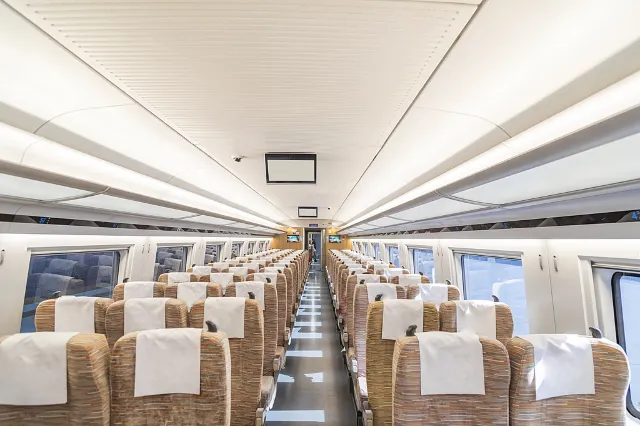
Overnight trains (Z/T/K) are slower (100-160 km/h) and designed for long-distance travel, offering sleeper options for budget-conscious travelers or those seeking a nostalgic rail experience.
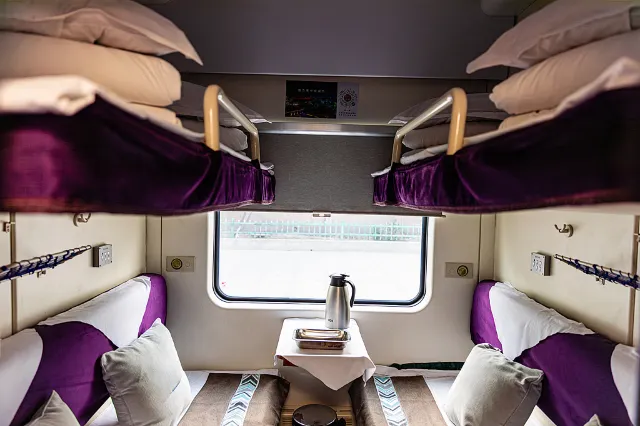
Z Trains (Zhi Da): The most modern overnight trains, with cleaner facilities and soft sleeper options.
T Trains (Te Kuai): Mid-tier, with slightly older carriages but reliable for long routes.
K Trains (Kuai Su): The slowest and least comfortable, with basic amenities.
China’s trains offer a range of seat classes, from budget-friendly to luxurious, catering to different preferences.
| Class | High-Speed (G/D/C) | Overnight (Z/T/K) |
| Budget | Second Class (2等座) Comfortable and affordable, basic seating. Second Class has 5 seats per row (3+2 layout). |
Hard Seat (硬座) The most budget-friendly option. Very basic amenities. |
| Mid-Tier | First Class (1等座) More space and comfort. First Class has 4 seats per row (2+2). |
Hard Sleeper (硬卧) Hard Sleeper has 6 bunks per compartment; open style. |
| Premium | Business Class (商务座) Luxurious experience. Business Class offers lie-flat seats. |
Soft Sleeper (软卧) Soft Sleeper has 4 bunks in a private cabin. |
To buy train tickets in China as a foreigner, you need a few essentials to ensure a smooth process.
Valid Passport (Required for China’s real-name ticketing policy)
Smartphone with Internet: Download these apps:
Trip.com: English-friendly, ideal for foreigners.
12306 App: The official railway app, available in English.
Working Phone Number: You must receive an SMS with registration/verification codes on 12306 or Trip.com.
IMPORTANT: Tickets are non-transferable. Name changes are not possible—ensure the spelling on your passport matches exactly.
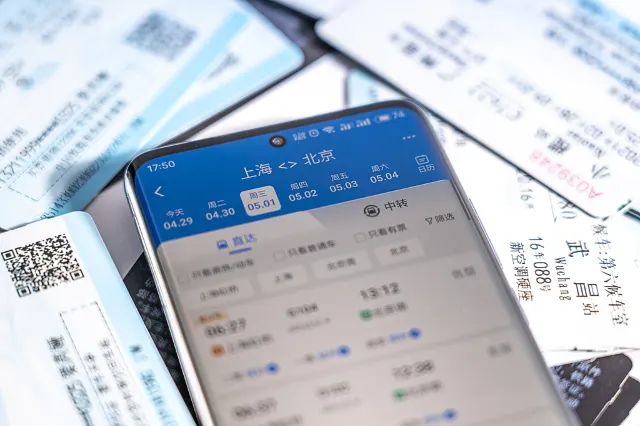
Online platforms are the most convenient way to secure tickets, especially for non-Chinese speakers. The two main options are Trip.com and the official 12306 app/website.
Trip.com is the go-to platform for foreigners due to its English interface, international payment options, and reliable customer support. Here’s how to book:
1. Download the App or Visit the Website
2. Search for Routes: Enter your departure and destination cities, as well as your travel date. English city names are accepted. Filter by train type (G/D/C for high-speed; Z/T/K for overnight).
3. Select Your Train: Review train options, including departure times, duration, and seat classes.
4. Enter Passenger Details: Input your full name (as on passport) and passport number. You can save details for future bookings.
5. Choose Seat Preference: Select window or aisle seats.
6. Pay Securely: Use international credit cards (Visa/Mastercard) or mobile payments like Apple Pay (a 3-5% fee applies to international cards). You can also pay using local systems like AliPay or WeChat Pay.
7. Receive E-Ticket: After payment, you’ll get an e-ticket via email or the app. No paper ticket is needed—show your passport at the station.
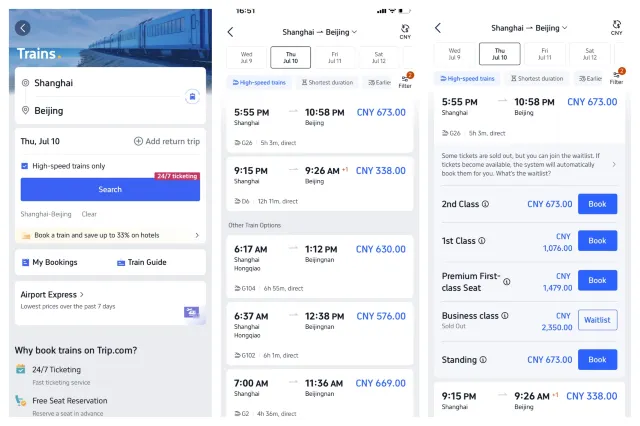
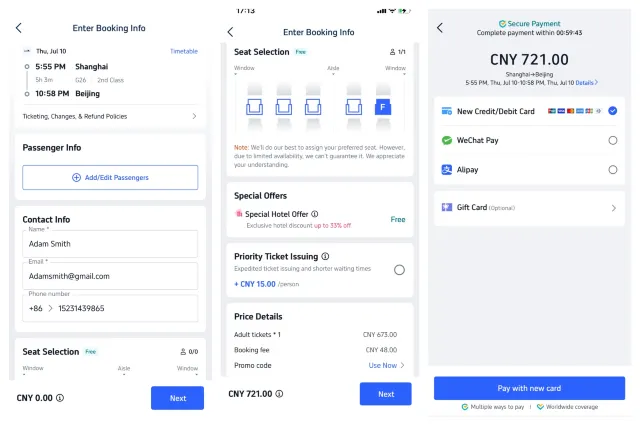
The official China Railway platform (12306) is cost-effective but less user-friendly for non-Chinese speakers. Follow these steps:
1. Download the App or Visit the Website: Search “12306” on the App Store, Google Play, or visit www.12306.cn. Switch to the English interface (located in the top-right corner).
2. Register an Account: Provide your passport number, email, and an international phone number for SMS verification.
3. Complete Identity Verification:
Online: Upload a passport photo and a real-time selfie for facial recognition. Verification takes 3-5 days.
Offline: Visit any train station ticket window with your passport for instant verification. This is required if online verification fails.
4. Search and Book: Enter departure/destination cities, travel date, and select a train. Station names may appear as Pinyin (e.g., “Shanghainan” for Shanghai South).
5. Pay for Tickets: Payment options are limited to Alipay, WeChat Pay, or Chinese bank cards. International cards do not always work.
6. Receive E-Ticket: E-tickets are issued instantly. Use your passport to board.
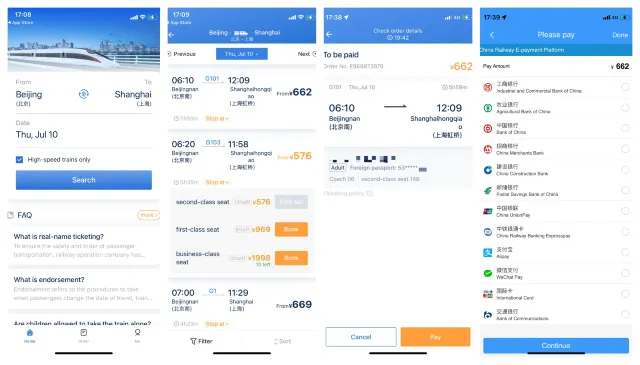
For those preferring in-person purchases, stations offer ticket windows and self-service machines; however, language barriers can pose a challenge.
Process: Visit any railway station ticket counter. Say “wàiguórén” (foreigner) and show your passport. Provide your desired train number, date, and destination (type them in a translation app and show your screen)
Availability: Major hubs like Beijing, Shanghai, and Guangzhou often have English-speaking staff. Smaller stations may not.
Payment: Accepts cash (CNY), Alipay, or WeChat Pay. Foreign cards are not accepted.
Tip: Arrive with train details pre-researched via Trip.com or 12306 to speed up the process. Have a backup train in case your preferred one is sold out.
Process: Select the English interface, choose “Passport,” scan your passport, and select your train.
Limitation: Only accepts Chinese bank cards or mobile payments (Alipay/WeChat).
Paper Tickets: Issued only upon request; e-tickets are now the standard.
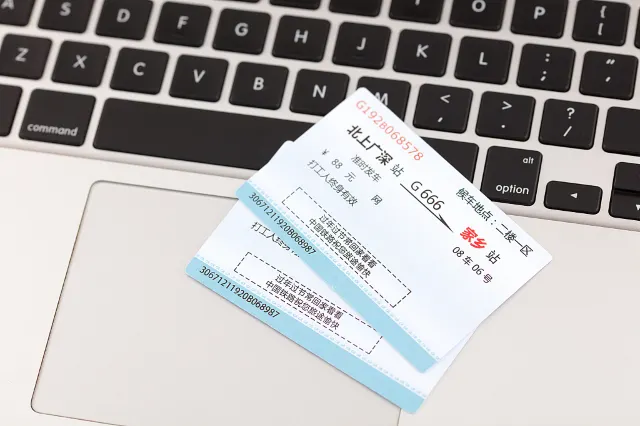
Timing is critical when purchasing train tickets in China, as tickets sell out quickly, especially during peak travel periods. Understanding booking windows and peak seasons will help you secure your desired train and seat class.
Most train tickets are released 15 days in advance at 14:00 Beijing Time (e.g., for travel on July 24, tickets go on sale July 9 at 2:00 PM).
Exceptions:
D-category sleeper trains (overnight high-speed) may open 20 days in advance.
C-category intercity trains (short-distance) often open 10 days in advance.
Chinese New Year (January/February): The world’s largest human migration sees millions traveling, causing tickets to sell out within minutes.
National Day (October 1-7): A week-long holiday with heavy domestic tourism.
Labor Day (May 1-5)
Summer holidays (July-August).
Qingming Festival (April 4-6)
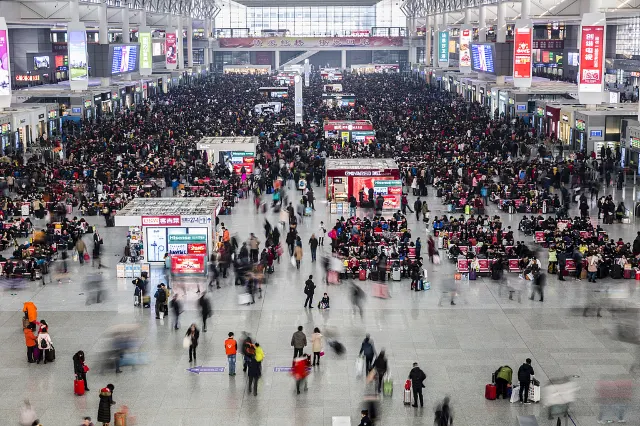
Boarding a train in China involves several steps, but it’s very straightforward:
1. Arrive Early: Reach the station 30-60 minutes before departure for security checks. Major stations can be crowded.
2. Security Check: Scan luggage and present your passport at the station entrance.
3. Gate Entry:
Automated Gates: Insert your passport (photo page down) at the ticket gate. The system matches it to your e-ticket.
Manual Lane: If the gate fails or you’re at a smaller station, please show your passport and e-ticket (either on your app or as a printout) to staff at the manual lane (人工通道).
4. Find Your Platform: Check departure boards for your train number (e.g., G267).
5. Onboard Checks: During the journey, train staff may verify your passport and ticket. Keep both accessible.
6. Exit: Upon arrival at your destination, swipe your passport through the automated exit gates or use the manual lane.
Tip: Save a screenshot of your e-ticket in case of app or internet issues.
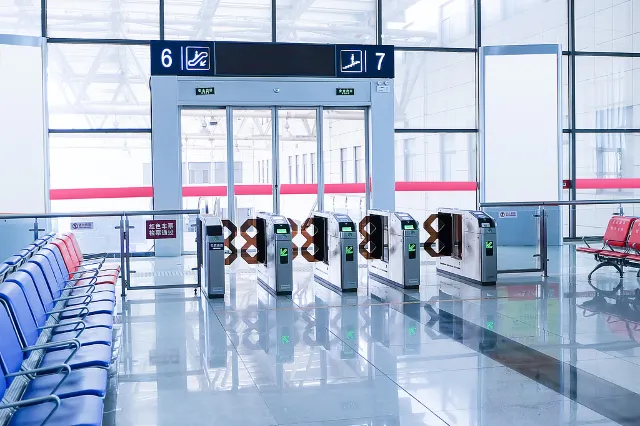
Buying train tickets in China as a non-Chinese speaker is easier than ever, thanks to platforms like Trip.com and the 12306 app. Trip.com offers a seamless English-language experience, while 12306 saves on fees but requires more effort.
Always double-check train schedules and policies closer to your travel date, as China Railway may adjust rules during peak seasons. If you encounter issues with 12306, consider visiting a station for in-person assistance or rely on Trip.com’s 24/7 support. Happy travels!
Trending Travelogues
Popular Attractions
Popular Ranked Lists
Popular Destinations
Recommended Attractions at Popular Destinations
About





Site Operator: Trip.com Travel Singapore Pte. Ltd.






